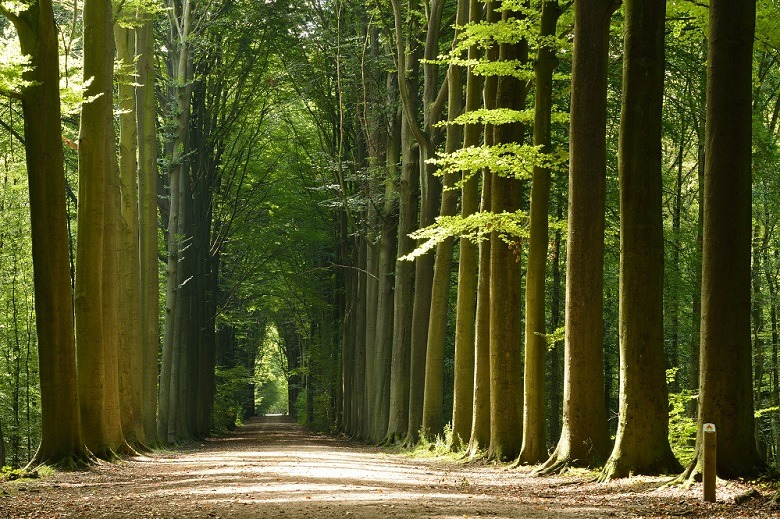BRUSSELS BEHIND THE SCENES
Weekly analysis and untold stories
With SAM MORGAN
Can't see the wood for the trees
Finland’s politicians took time away from trying to join NATO this week to write a landmark climate goal into law. Can the Finns go carbon-neutral by 2035? New data released this week suggests that it is going to be a Herculean challenge.
In terms of outright climate policy ambition, Finland is arguably top of the class, if not just in Europe but also worldwide. Huge forests and massive clean energy resources mean Finns are eager to embrace the green transition.
The European Union’s main Green Deal goal is to go ‘climate-neutral’ by 2050. This essentially means that by mid-century, the EU member states will collectively absorb the same volume of greenhouse gas emissions that are pumped into the atmosphere.
Each country has its own neutrality deadline. Most have stuck to the 2050 benchmark set by Brussels, while others like Austria and Sweden want to curb their emissions earlier in the 2040s.
Finland has now legally signed up to a 2035 deadline after informally subscribing to it a couple of years ago.
BRUSSELS BEHIND THE SCENES is a weekly newsletter which brings the untold stories about the characters driving the policies affecting our lives. Analysis not found anywhere else, The Brussels Times’ Sam Morgan helps you make sense of what is happening in Brussels. If you want to receive Brussels behind the scenes straight to your inbox every week, subscribe to the newsletter here.
The process that the Finns went through to arrive at that date is a lesson in scientific policymaking. A dedicated panel of scientists poured over data and models to produce a report that suggested 2035 should be written into law.
According to the committee, carbon-neutrality by 2035 and then carbon-negativity by 2040 – when Finland should be absorbing more emissions than it produces – is a matter of fairness under the internationally-binding Paris Agreement.
That is because Finland is the most forested country in Europe. Nearly 75% of its total land area is covered in woodland, which means its capacity to absorb greenhouse gases is very high.
Technology that can do the same job as trees – which is supposed to either capture carbon when it is released in industrial processes or filter it out of the air – is still small-scale and nowhere near in the same league as carbon sinks like forests.
Finland’s immense natural resources means that it can craft these kinds of world-leading climate policies. Other measures like green taxes and renewable energy support schemes will also have to come into play of course.
But there is one catch to this leafy strategy: Finland’s trees are not absorbing as much CO2 as planned. In fact, they are emitting more of the planet-warming molecules than they are drawing down from the air. This is not good.
Early data released by researchers at the National Resources Institute Finland, show that in 2021 Finland’s forestry sector became a source of greenhouse gas emissions for the very first time.
Although only preliminary, the data shows that increased logging and slower than expected tree growth has shoved the sector off its axis. It could destabilise Finland’s climate policies and risk its commitments at EU level.
Work is currently underway to update the land use, land use change and forestry sector (LULUCF) rules, which govern how countries should use their forests, wetlands and other natural areas to aid their climate policies.
It is a complex law, which aims to remove more than 300 million tonnes of CO2 by 2030. MEPs recently voted on what they want from the reform, adding new requirements to what the European Commission has already proposed.
Bioenergy is big business, especially for the Nordic nations. It also underpins the EU’s clean energy targets, as it provides more than half of the bloc’s total renewable energy. This is contrary to the popular belief that it is all wind, solar and hydro.
A shakeup is in the works. While many countries including energy-hungry Germany want to shift away from Russian fossil fuels towards other power sources like biomass, regulators want to curb what can and cannot be called renewable.
MEPs also voted this month to limit what can be labelled as ‘sustainable’ under the EU’s renewable energy directive. Talks with member states and the Commission, which has built much of its policy on wood-burning, will be difficult later this year. Finland will want to have its say.
Unfortunately, as Finland is showing, looking after nature and exploiting it at the same time is a risky business. Whether these new developments force Helsinki to rethink its bio-businesses and shift towards providing materials that lock in carbon, like construction and paper, remains to be seen.
Perhaps one route would be to get out of the logging business altogether and position Finland as Europe's carbon sink, charging EU members fees to offset any emissions they cannot easily get rid of.
That, again, is probably asking for trouble though.
BRUSSELS BEHIND THE SCENES is a weekly newsletter which brings the untold stories about the characters driving the policies affecting our lives. Analysis not found anywhere else, The Brussels Times’ Sam Morgan helps you make sense of what is happening in Brussels. If you want to receive Brussels behind the scenes straight to your inbox every week, subscribe to the newsletter here.

